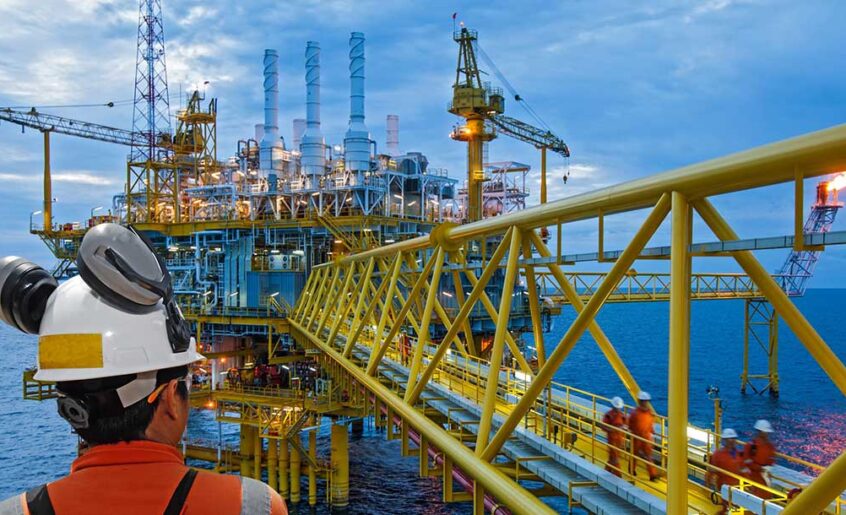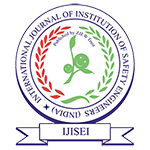Ensuring Fire Safety in Oil & Gas Industries: Best Practices And Preventive Measures

Volume 6, Issue 2, April-June 2023
Ensuring Fire Safety in Oil & Gas Industries: Best Practices And Preventive Measures
Shahnawaz Rampuri
M.Tech, PGHRD, PGDGC, DIS with 15+ Yr Experience in field of EHS
Email id: shahnawaz.rampuri2@gmail.com
I. Introduction
Oil and gas sectors function with innate blaze perils owing to the character of the substances implicated, elevated heat levels, and intricate procedures. These sectors handle combustible materials like unrefined oil, fuel derivatives, and methane, which can trigger and result in conflagrations and blasts if appropriate measures are not implemented. The ramification of blaze occurrences in these sectors can be grave, encompassing fatality, substantial asset impairment, ecological contamination, and disturbance of activities.
To guarantee the security of labourers, establishments, and nearby neighbourhoods, executing efficient blaze safety precautions is of supreme significance. Through the utilisation of optimal methodologies and precautionary actions, petroleum and natural gas corporations can considerably diminish the possibility of conflagration events and alleviate their consequences in the event of their occurrence.
2. Understanding the Fire Hazards in Oil & Gas Industries:
Oil and gas installations exhibit diverse blaze perils that necessitate recognition and comprehension to devise suitable Fire safety tactics. Combustible materials, like fossil fuels and methane, present noteworthy hazards. These materials possess distinct characteristics that render them extremely flammable upon encountering ignition sources like sparks, exposed fires, or elevated temperatures.
Aside from the combustible materials themselves, other possible fire risks in oil and gas plants consist of machinery glitches, electrical malfunctions, high-temperature operations, storage containers, conduits, production systems, and ignition points linked with equipment performance. Comprehending these perils and their plausible aftermaths is pivotal for executing efficient blaze prevention and command tactics.
2.1 Developing a Comprehensive Fire Safety Plan:
An all-encompassing blaze prevention strategy customised to the particular requirements of Oil and gas sectors is imperative for guaranteeing the security of staff and resources. This strategy ought to comprise numerous pivotal components:
a) Risk evaluations: Performing comprehensive risk evaluations aids in recognising possible fire dangers, assessing their gravity, and deciding on suitable preventative actions and contingency plans.
b) Emergency reaction protocols: Precisely established emergency reaction protocols ought to be in place, delineating measures to be taken in the occurrence of a conflagration event. This comprises of correspondence conventions, clearing out strategies, gathering spots, and the obligations and duties of crisis reaction groups.
c) Flame spotting and extinguishing mechanisms: Incorporating dependable flame spotting mechanisms, such as temperature, fume, vapour, and blaze sensors, allows prompt spotting of fires. These mechanisms ought to be amalgamated with efficient fire extinguishing mechanisms, encompassing aqueous sprinkler mechanisms, froth mechanisms, or vaporous suppression mechanisms, relying on the particular prerequisites of the establishment.
d) Personnel education: Sufficient education and consciousness initiatives ought to be granted to all staff, highlighting blaze deterrence, secure departure protocols, correct utilisation of flame suppressants, and the significance of immediate notification of plausible flame risks. Frequent fire drills and workouts are essential to guarantee readiness and acquaint staff with contingency protocols.
e) Strategy assessment and revisions: The blaze prevention blueprint must be frequently assessed and revised to encompass knowledge acquired from occurrences, alterations in statutes, and progressions in flame safety technology.
By executing an all-inclusive blaze security strategy, oil and gas enterprises can efficiently avert conflagrations, diminish the probability of mishaps, and guarantee a prompt and proficient reaction in case of a crisis.
2.2 Implementing Preventive Measures:

Precautionary steps have a noteworthy function in lessening the possibility of fire occurrences. Several crucial precautionary steps in the petroleum and natural gas sectors comprise:
a) Apparatus and apparatus upkeep Frequent scrutiny, upkeep, and examination of apparatus and machinery aid in detecting and resolving possible combustion risks. This comprises inspecting electrical frameworks, guaranteeing adequate airing, and upholding command frameworks to avert machinery breakdowns that may result in conflagrations.
b) Fire safety mechanisms: Setting up and upkeeping fire safety mechanisms, like flame-retardant partitions, fire-blocking entrances, and fire-defying layers, aids in confining blazes and hindering their expansion. These mechanisms ought to adhere to pertinent regulations and norms and be frequently scrutinised and verified.
c) Maintenance of the premises: Appropriate maintenance of the premises, such as the elimination of flammable substances, efficient garbage disposal, and the preservation of open and unobstructed walkways, diminishes the possibility of fire occurrences and enables secure evacuation during emergencies.
d) Hot work authorizations: Enforcing an authorization scheme for hot work operations, such as soldering, shearing, or sanding, guarantees that these operations are carried out securely. This comprises recognising plausible fire risks, executing fire prevention actions, and ensuring sufficient monitoring during high-temperature tasks.
e) Safe management of perilous substances: Rigorous procedures for the safekeeping, manipulation, and elimination of hazardous substances, such as combustible fluids, vapours, and compounds, are vital. This comprises of accurate tagging, appropriate storage receptacles, and conformity to safety data sheets and regulatory prerequisites.
By executing these precautionary actions, petroleum and natural gas enterprises can considerably diminish the possibility of conflagration occurrences and boost comprehensive security within their establishments.
3. Fire Detection and Suppression Systems:
Flame spotting and extinguishing mechanisms are crucial constituents of fire security in Oil and gas sectors. These mechanisms aid in identifying conflagrations during their initial phases and facilitate prompt reaction and efficient confinement. Important factors to take into account comprise:
a) Flame sensing mechanisms: Incorporating a blend of flame sensing technologies, like thermal sensors, fume sensors, vapour sensors, and blaze sensors, offers extensive protection and premature notification of fire occurrences. These mechanisms ought to be tactically positioned in zones with elevated fire hazards, encompassing operational sections, stockpiling zones, and command centres.
b) Fire quelling techniques: Diverse categories of fire quelling techniques can be utilised depending on the particular requirements of the establishment. Aqueous systems, like water sprinklers, are frequently employed for universal fire safeguarding. Aerated arrangements are efficient for combustible fluid infernos, whereas vaporous stifling arrangements, like carbonic acid gas or pure agents, are appropriate for safeguarding crucial machinery or zones where aqueous-based arrangements are not feasible.
c) Incorporation with alert and management systems: Flame perception and extinguishing systems ought to be incorporated with alert and management systems to guarantee a synchronised reaction. This comprises triggering alerts, powering off machinery, activating flame inhibition mechanisms, and commencing evacuation protocols.
d) Routine upkeep and examination: Flame perception and extinguishing mechanisms ought to experience frequent upkeep, scrutiny, and examination to guarantee their appropriate operation. This encompasses verifying for defective detectors, substituting outdated fire quenching substances, and executing apparatus evaluations in accordance with statutory prerequisites.
Through utilising dependable fire recognition and extinguishing mechanisms and guaranteeing their appropriate upkeep, petroleum and natural gas sectors can promptly identify and manage fire occurrences, lessening their effect on staff and establishments.
4. Emergency Response and Training:
Training staff to react efficiently during urgent circumstances is crucial for reducing the consequences of blaze occurrences. Important factors to take into account comprise:
a) Contingency strategy: Formulating a clearly outlined contingency strategy is imperative. This strategy ought to delineate communication conventions, egress methodologies, congregation spots, exigency cessation methodologies, and the functions and obligations of exigency reaction crews. It ought to additionally contemplate particular circumstances and plausible hazards within the establishment.
b) Instructional courses: Performing routine instructional sessions and exercises is crucial to acquaint staff with contingency protocols, escape pathways, and the utilisation of flame-prevention gear, like fire suppressors. Instruction ought to encompass flame inhibition, recognition of conceivable flame perils, and the significance of timely notification.
c) Urgency reaction squad: Assigning and educating an urgency reaction squad furnished with the essential expertise and comprehension to manage blaze occurrences proficiently is crucial. This group ought to be accountable for organising urgent reaction endeavours, executing dislodgments, and guaranteeing the welfare of staff.
d) Regular practises and workouts: Consistent fire practises and workouts ought to be carried out to evaluate the efficiency of the emergency response scheme, recognise regions for enhancement, and enhance overall readiness. These exercises ought to replicate diverse blaze situations and engage all staff to guarantee a synchronised reaction.
By giving precedence to emergency response readiness and offering routine education, petroleum and natural gas sectors can amplify the security of their employees and decrease the repercussions of blaze occurrences.
5. Continuous Improvement and Industry Collaboration:
Fire safety in Oil and gas enterprises is a persistent procedure that necessitates unceasing enhancement and teamwork. Important aspects to take into account comprise: a) Insights gained and optimal methodologies:
a) Exchanging insights gained from fire occurrences, close calls, and sector-wide optimal methodologies is vital for enhancing fire safety norms. This can be accomplished via online discussion boards, symposiums, and trade organisations.
b) Adhering to regulatory conformity: Keeping abreast with relevant blaze security statutes, principles, and benchmarks is indispensable. Complying with statutory obligations guarantees that the essential flame-resistant precautions are established and reduces the possibility of juridical aftermaths.
c) Collaboration and exploration: Cooperating with business partners, governing agencies, and academic establishments encourages originality and advances the growth of sophisticated fire prevention technologies and methodologies. Disseminating wisdom and expertise may enhance the comprehensive enhancement of blaze security in the petroleum and natural gas sector.
Through persistent efforts towards enhancement, cooperation with fellow professionals in the field, and staying up-to-date with the most recent studies and progressions, oil and gas corporations can boost their fire prevention measures and guarantee the welfare of their employees and resources.
6. Conclusion:
Fire safety is of supreme significance in oil and gas sectors owing to the intrinsic blaze perils linked with combustible materials and intricate procedures. Comprehending the blaze perils, formulating all-encompassing fire security schemes, executing preemptive actions, allocating resources for fire recognition and extinguishing mechanisms, and giving precedence to emergency reaction drills are crucial in guaranteeing fire security.
Through embracing optimal methodologies, complying with mandates, and cultivating teamwork within the sector, petroleum and natural gas corporations can diminish the possibility of conflagrations, safeguard staff and resources, and promote a more secure labour milieu. Perpetual enhancement and a forward-thinking attitude towards fire security are indispensable to tackle evolving predicaments and guarantee the enduring safety and durability of the petroleum and natural gas sector.
References
- Batteiger, V., Murray, R., & Reiber, J. (2018). Fire safety in the oil and gas industry. In Conference Proceedings: NFPA Conference & Expo. National Fire Protection Association.
- Burrows, J., & Robinson, G. (2019). Enhancing fire safety in the oil and gas industry through risk assessment and management. Process Safety Progress, 38(1), e12072.
- Cao, Y., Han, G., & Qi, J. (2017). Fire hazard analysis and safety management in the oil and gas industry. Fire Safety Journal, 93, 99-107.
- García-Agreda, A. J., Almeida, L. F., & Steen, M. (2019). Fire safety in the oil and gas industry: A review of regulatory frameworks. Process Safety and Environmental Protection, 122, 68-81.
- Khakzad, N., & Khan, F. (2016). Review of approaches for fire risk assessment in the oil and gas industry. Process Safety Progress, 35(3), 274-284.
- McCall, P. (2018). Fire safety in oil and gas facilities. In Offshore Safety Management (pp. 259-282). Springer.
- Olewski, T., & Chiantore, P. (2017). Advances in fire protection and prevention in the oil and gas industry. In Loss Prevention and Safety Promotion in the Process Industries (Vol. 2, pp. 1225-1235). Elsevier.
- Yang, M., Yang, Z., & Khan, F. (2018). Fire and explosion risk analysis in the offshore oil and gas industry: A review. Journal of Loss Prevention in the Process Industries, 53, 131-152.
- Institution of Safety Engineers (India), Safety Manuals
- Manuele, F.A. (2008). Advanced safety management focusing
